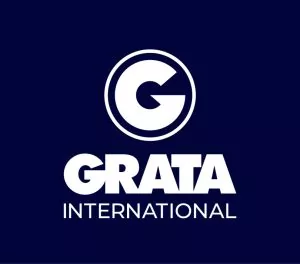- within Energy and Natural Resources topic(s)
- in Africa
- in Africa
- in Africa
- within Real Estate and Construction topic(s)
On October 31, 2024, the President of Uzbekistan signed Law No. ZRU-987 "On Subsoil," which will come into force on February 2, 2025. This new legislation revises and updates the legal framework for subsoil use, ownership, and protection in Uzbekistan, introducing several updates that affect businesses and investors involved in mining, extraction, and related activities. The law, which expands from 51 articles in the previous version to a comprehensive 172 articles, regulates the exploration and mining of both hard minerals and hydrocarbons.
Key Highlights of the New Law:
The updated law includes directly applicable norms to provide clear, enforceable guidelines for those engaged in subsoil use. Unlike previous regulations that might have required further interpretation or additional legislative acts, the directly applicable norms in this law establish clear rules that companies and individuals must follow, simplifying the legal framework. These norms define specific requirements for obtaining permits, using subsoil resources, and fulfilling obligations related to reporting and compliance.
Types of Subsoil Use
The law defines specific categories of subsoil use, each with its own regulatory standards. The recognized types of subsoil use are as follows:
- Geological exploration of hard minerals;
- Mining of hard minerals;
- Reconnaissance of hydrocarbons;
- Geological exploration of hydrocarbons;
- Mining of hydrocarbons;
- Geological exploration for underground storage;
- Underground storage;
- Artisanal mining;
- Collection of sample materials for collections.
State Ownership of Subsoil Resources
Under the new law, all subsoil resources within Uzbekistan's territory – including minerals, hydrocarbons, and other geological resources – are designated as exclusive state property. This principle means that subsoil resources cannot be privately owned, transferred, or mortgaged. The law prohibits any form of private transaction regarding subsoil plots, which cannot be bought, sold, gifted, inherited, or pledged as collateral.
The government, however, may grant use rights to eligible entities, defined strictly by the new law. Eligible entities include citizens and residents of Uzbekistan, as well as legal entities registered and operating within Uzbekistan. Entities applying for permits must demonstrate compliance with eligibility requirements.
Subsoil Use Permits
Article 31 of the law specifies that each type of subsoil use requires a permit issued by the Center for Subsoil Use. This permit grants the holder exclusive rights to a defined subsoil plot, provided they comply with the law's requirements and any other applicable regulations. The law follows a "first-come, first-served" principle for granting permits, with the possibility of additional issuance methods specified by the law. Permits are issued exclusively to one individual or entity, and adjacent plots for the same project can be managed as a single project for regulatory purposes.
Permits are issued electronically through the "License" information system or the Unified Portal of Interactive Public Services and include a QR code, official documentation, and a certified map showing cadastral squares. It is important to note that these permits confer subsoil use rights but do not establish land ownership, requiring separate land access arrangements where necessary.
Permitting Process through the "One-Stop Shop" Principle
A notable feature of the law is the introduction of the "one-stop shop" principle for subsoil permitting. This system centralizes the permitting process, allowing businesses to apply through a single governmental office. Under this principle, the central office is responsible for coordinating all aspects of permit issuance, which is expected to reduce delays by removing the need to interact with multiple agencies.
Reconnaissance Work on Hard Minerals
The law allows any authorized entity to conduct reconnaissance work on hard minerals without a permit, except on land designated for defense. The entity must notify the Center for Subsoil Use, register its name and address, and provide details of the proposed site. Reconnaissance activities must not disrupt the integrity of the subsoil, and land access must be obtained from landowners or users where applicable.
Permits for Geological Exploration of Hard Minerals
Permits for geological exploration of hard minerals are granted on a "first-come, first-served" basis for open cadastral squares. Applications can cover up to specific limits of cadastral squares based on resource type, such as 2,100 for energy minerals and 525 for precious stones. Applications submitted through electronic platforms must include identification information, cadastral maps, compliance verification, and a commitment to complete environmental assessments before mining. A non-refundable application fee is required. The Center for Subsoil Use reviews applications and issues confirmation of submission, with any deficiencies requiring correction within ten working days, or the application will be rejected. To qualify, legal entities must be able to prove they are eligible, including providing accurate information on their beneficial owners. They are also subject to minimum annual spending requirements to ensure active development.
The law also stipulates additional methods for issuing permits for geological exploration of hard minerals, specifically through auctions. If the Ministry of Mining and Geology determines that an auction is necessary, permits can be allocated via an electronic trading platform, ensuring transparency and preventing outside interference. The Center for Subsoil Use reserves specific cadastral squares for auction.
Participants must meet the basic application criteria outlined in Article 39 and may face additional requirements for financially and technically demanding projects. The starting bid price is set based on the type of mineral, with funds from auctions distributed according to legislative procedures. In some cases, permits may also be issued based on decisions by the President or Cabinet of Ministers, potentially with additional conditions or fees specified in an agreement with the Cabinet of Ministers. The auction's outcome document serves as the basis for issuing the exploration permit.
Permits for Mining of Hard Minerals
A subsoil user holding a geological exploration permit has the exclusive right to apply for a mining permit on contiguous cadastral squares within their exploration area, as long as there is a commercially viable deposit of hard minerals on at least one of these squares. To obtain the extraction permit, the subsoil user must submit an application to the Center for Subsoil Use. If the exploration permit expires while awaiting the required environmental approval for the mining application, the exploration permit remains valid until the environmental approval is obtained or denied.
Validity Periods for Permits
Geological Exploration of Hard Minerals:
Permits for geological exploration of hard minerals are granted for
up to:
- Five years for primary mineral types.
- Two years for non-metallic minerals.
Permit holders may apply to extend the exploration period. For primary minerals, the extension can be granted twice, each for an additional four years. For non-metallic minerals, extensions may also be granted twice, with each extension lasting up to two years. Notably, upon each extension, the number of cadastral squares included in the permit is reduced by 50%.
Mining of Hard Minerals:
Permits for mineral mining are initially issued for a maximum term
of 25 years. These permits may be extended multiple times, with
each extension matching the original term.
Additionally, there is an annual license payment for geological exploration, which is a fee paid for the right to explore mineral deposits within the designated cadastral squares. The payment amount is based on a percentage of a base rate, varying by the type of minerals being explored (10% for main minerals and 15% for non-metallic minerals). The payment is made annually, with the first and last years prorated. It must be paid within 30 days of receiving the permit for the first year, and by March 31 for subsequent years. The collected payments are distributed between the national and local budgets of Uzbekistan.
Local Workforce and Procurement Requirements
The new regulations mandate that subsoil users prioritize hiring local labor and using locally sourced goods and services wherever possible. All non-specialized labor for positions that do not require qualifications must come from Uzbek citizens, with a cap on foreign management and specialists at 20% per category, unless the company justifies a shortage of qualified local candidates. During project construction, these limits may be relaxed in regions with insufficient local skills.
Subsoil users engaged in major mineral or hydrocarbon extraction must develop training programs for Uzbek citizens within 12 months of starting operations. These programs should cover skill transfer, science and education support, and equal opportunities. At least 1% of annual net revenue from the previous year must fund these programs, with annual reports on training activities required.
Subsoil users are also encouraged to use Uzbek-produced goods and services, provided they match international standards in quality, price, and delivery terms. They must report annually on their local procurement efforts, with additional local content requirements potentially specified by law.
Interactive Geological Portal for Subsoil Use
The new law establishes an interactive geological portal that grants access to a wide range of non-confidential data relevant to subsoil use. This includes information on mineral deposits, abandoned mining sites, contaminated areas, and environmental factors such as soil, geology, and climate conditions. The portal, built on a Geographic Information System (GIS), enables the visualization and exchange of data through web platforms or other information systems.
Oversight and Compliance
Enforcement of the new Subsoil Law will be conducted by several government bodies, including the Ministry of Mining Industry and Geology, the Ministry of Ecology, Environmental Protection, and Climate Change, the Ministry of Energy, the Inspection for Control in the Mining Industry and Geology under the Ministry of Mining Industry and Geology, the Center for Subsoil Use, and local executive authorities. These institutions are tasked with monitoring compliance with the law's requirements, enforcing sustainable resource use practices, and ensuring that businesses adhere to their reporting obligations and minimum expenditure commitments.
Right to Appeal and Dispute Resolution
There is a right to appeal any decision made by the Center for Subsoil Use or any other state authority in accordance with the law, including refusals to issue or extend permits or decisions to annul permits, through the courts. Disputes regarding subsoil use are resolved according to the legislation. Additionally, subsoil users can appeal to international arbitration if a relevant arbitration clause is included in international treaties of Uzbekistan or agreements with the investor. Subsoil users can also seek stability guarantees regarding fiscal, tax, customs, and currency regimes from the Center for Subsoil Use. These guarantees include maintaining the economic conditions in place when the guarantee was provided. If changes to the legislation lead to increased costs or reduced revenues, the subsoil user may request compensation or insist on maintaining the previous legislative conditions. The procedures for ensuring stability guarantees, including the right to participate, the duration, extension conditions, and limitations, are defined by the relevant laws. Subsoil users also have the option to waive the stability guarantee and opt for more favorable measures introduced after the guarantee was provided, but only under specific terms.
The content of this article is intended to provide a general guide to the subject matter. Specialist advice should be sought about your specific circumstances.




